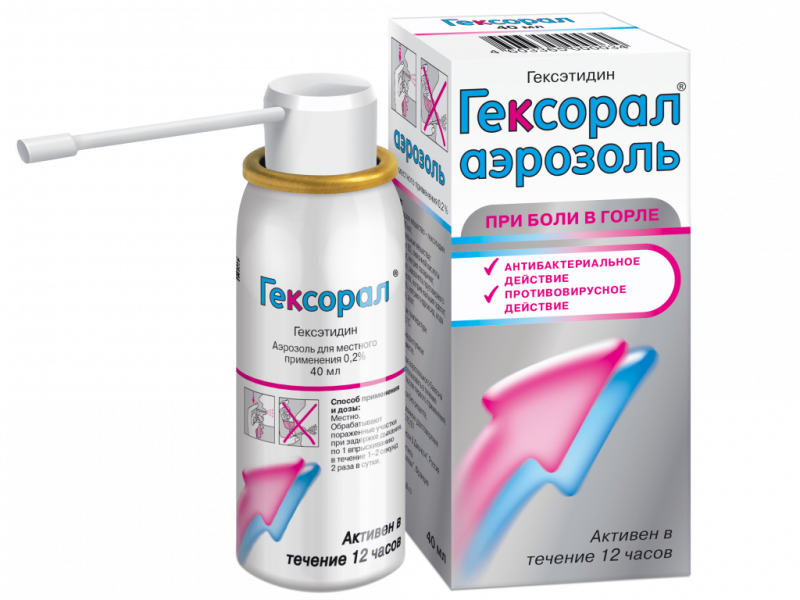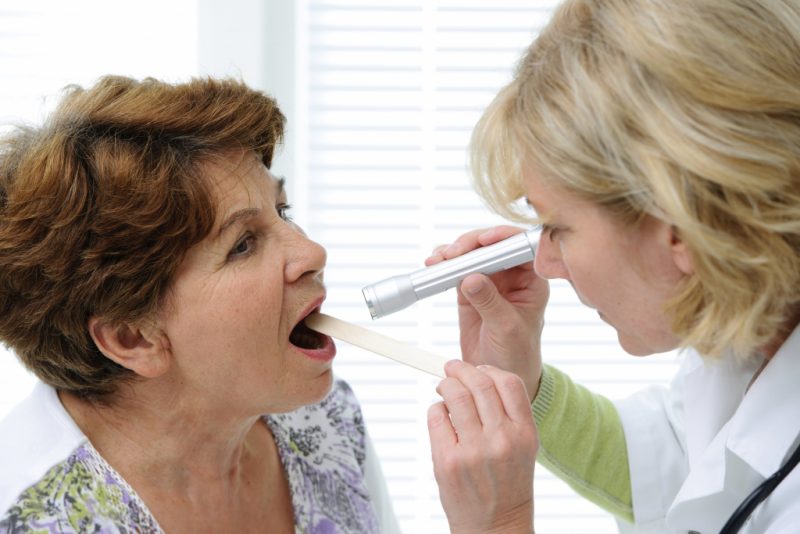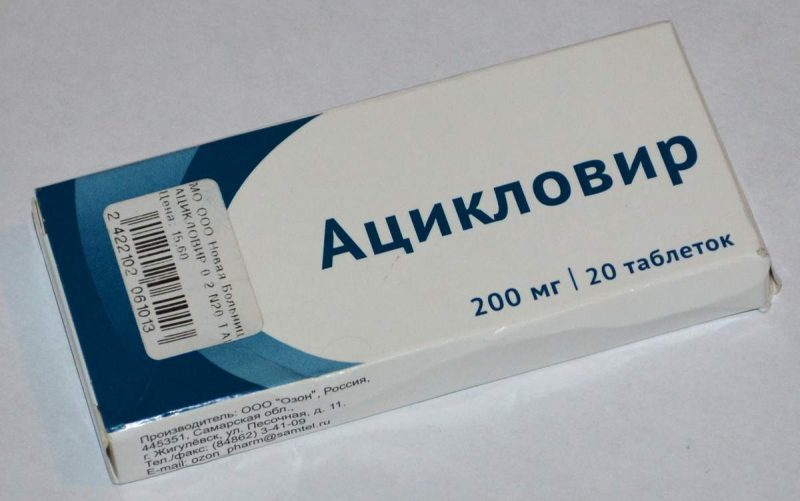Acute tonsillitis is commonly called as tonsillitis in everyday life. This insidious disease is accompanied by an infectious lesion of the palatine tonsils and can cause a lot of dangerous complications. Often patients are recommended to be placed in a hospital, but in uncomplicated cases, treatment of angina in adults at home is also possible. It is important to understand the principles of therapy and coordinate your actions with your doctor.
Material Content:
The basic principles of the treatment of angina in adults
Since angina is an infectious disease, the main goal of treatment is the elimination of pathogenic flora from the tissues of the tonsils. The second task of therapy is the elimination of intoxication of the body and the restoration of immunity. Various methods are used to solve this complex of problems.

What drugs, antibiotics help with the disease?
First of all, with tonsillitis, antibiotic therapy is prescribed.
Treatment of angina with antibiotics is a radical step, but necessary.
Other tools and methods are auxiliary.
In addition to antibacterial drugs, it is advisable to prescribe antihistamines and non-steroidal anti-inflammatory drugs:
| Drug group | Drug Names | Application | Contraindications |
|---|---|---|---|
| Antibiotics | Sumamed | 1 tablet of 500 mg or 2 capsules of 250 mg 1 time per day. | • hypersensitivity to macrolides; • severe liver and kidney dysfunctions. |
| Amoxiclav | 1 tablet of 250 mg or 1 tablet of 500 mg every 8 hours. | • hypersensitivity to components; • liver dysfunction; •Infectious mononucleosis; • lymphocytic leukemia; • with caution - during pregnancy and lactation. | |
| Amoxicillin | 1 tablet of 500 mg or 2 tablets of 250 mg 3 times a day. | • gastrointestinal tract infections with vomiting and diarrhea; •Infectious mononucleosis; • lymphocytic leukemia; • allergies and hypersensitivity. | |
| Antihistamines | Suprastin | 1 tablet 25 mg 3 times a day | • peptic ulcer; •glaucoma; •arrhythmia; • myocardial infarction; • prostate dysfunction; • individual intolerance. |
| Non-steroidal anti-inflammatory | Ibuprofen | 1 tablet 200 mg 3 times a day | • internal bleeding; • severe renal and liver dysfunctions; • peptic ulcer; • hyperkalemia; • III trimester of pregnancy. |
| "Paracetamol" | 1 tablet 500 mg 3 times a day | • severe renal and liver dysfunctions; •alcoholism; • blood diseases; • hypersensitivity. |
Often with prolonged antibiotic treatment, the development of fungal lesions is observed, for the suppression of which the antifungal drug Nystatin or Ketonazole can be prescribed.
It is also important to supplement drug therapy with means to increase immunity - vitamin or immunomodulating drugs.
Rinse as a remedy for sore throat
The purpose of rinsing with angina is to wash off the pathogenic flora from the surface of the tonsils.

For this, antiseptic solutions are used:
- Solution furatsillina. Grind 2 tablets into powder and dissolve in 1 cup boiling water. Cool to a warm state.
- Soda-salt solution with iodine. Dissolve 1 teaspoon of salt and 1 teaspoon of soda in 0.5 liters of hot water. Drop 3-4 drops of iodine into the solution.
- Lugol's solution. Dilute 1 teaspoon of pharmacy solution in 1 cup of warm water.
- Propolis solution. Dilute 2 teaspoons of alcohol pharmacy solution in 1 cup of warm water.
- Chlorophyllipt Solution. Dilute 2 teaspoons of the pharmacy solution in 1 cup of warm water.
Gargle with tonsillitis is necessary at least 6 times a day. The product must be prepared in a sufficient volume - about 0.5 liters per rinse. For each procedure, it is better to use a fresh solution.
Throat Sprays
The use of sprays is advisable after rinsing. Their spraying on the surface of the washed tonsils has a local analgesic and anti-inflammatory effect.

The following preparations in the form of sprays have proven themselves well:
- Tantum Verde;
- Hexoral
- Strepsils
- "Ingalipt";
- "Lugol Spray."
You can also use resorption tablets, which have the same effect as sprays - “Faringosept”, “Septolete”, “Strepsils”.
It is important to understand that neither sprays nor lozenges treat tonsillitis.
They alleviate some symptoms of a sore throat and help relieve sore throat, but only antibiotics can destroy an infection that has penetrated deep into the tissue.
Throat compresses
Warming compresses, more recently popular in the treatment of tonsillitis, today cause controversy. On the one hand, they improve local blood circulation and relieve pain when swallowing. On the other hand, they contribute to the penetration of infection through the circulatory system to other organs, which leads to serious complications. For the same reason, with angina, inhalation is not recommended.

It is strictly forbidden to put compresses in the following situations:
- the presence of pus on the tonsils;
- heat;
- cerebrovascular accident;
- cardiovascular pathology;
- allergies and dermatitis;
- thyroid disease.
However, compresses can alleviate the condition if angina is accompanied by lymphadenitis - inflammation of the submandibular or cervical lymph nodes.
To do this, you can use the drug "Dimexide", which penetrates well through the skin, anesthetizes and relieves inflammation:
- dilute "Dimexide" with warm water in a ratio of 1: 3;
- moisten a gauze compress in the solution and squeeze;
- apply a compress to the submandibular and lateral surfaces of the neck;
- fix it with a dry soft cloth;
- knit a wool scarf.
Keep this compress should be for an hour, after which the skin needs to be wiped with clean water.
Folk remedies

Traditional medicine is able to offer a lot of auxiliaries, well complementing drug therapy:
- Honey-vinegar rinse. Dissolve 1 teaspoon of 6% apple cider vinegar in 1 cup of warm water. Add 1 teaspoon of honey and gargle.
- Rinse with a decoction of oak bark. Pour 1 tablespoon of raw materials with a slide into an enameled bowl and brew 0.5 liters of boiling water. Drain on the stove for 30 minutes, cool to a warm state and filter.
- Propolis peas. After rinsing, take pea-sized pieces of propolis and chew thoroughly until a characteristic burning sensation and numbness appears.
- Dry salt compress. Warm coarse salt in a frying pan or in the oven and pour it into a cloth bag. In a warm form, put on the neck area in the submandibular zone and secure with a scarf. Keep until cool.
In the treatment of tonsillitis, decoctions of rose hips, infusions of chamomile and linden blossom, tea with lemon, which you need to drink in large quantities, are very useful. To soften the throat, you can use warm milk with a teaspoon of honey.
It is interesting:than gargling with angina for an adult and a child
Treatment depending on the form of angina
Tonsillitis has many varieties and a complex classification. Depending on the form in which it occurs, the treatment may have its own characteristics.
Catarrhal
With the catarrhal form of angina, the mucous membranes are superficially affected, without deep penetration of the infection into the tissues, therefore it is considered easy.

- Tonsils turn red, become loosened and increase in size.
- Inflammation affects the adjacent arches and soft palate.
- There is an increase in temperature to 380C.
- There are pains when swallowing, headaches.
- There is a general weakness.
Treatment of the catarrhal form of tonsillitis occurs according to the usual scheme and often dispenses with the appointment of antibiotics.
But if the disease is started, it can go into a more severe stage - lacunar angina.
With it, a white coating appears on the tonsils, exudate is collected in the gaps. The temperature can rise to 39 ° C and higher. Treatment of lacunar angina should be under the strict supervision of a doctor, as the disease is fraught with serious complications.
Follicular
Follicular tonsillitis is characterized by deep damage to the tissues of the tonsils. Yellow-white foci resembling grains - festering follicles become noticeable on them. This form is considered severe and often requires placement in a hospital.

- As with lacunar angina, the temperature can be high - from 39 ° C and above.
- The patient has increased salivation.
- Sharp pains are present, swallowing becomes very difficult.
- Sometimes there are pains in the heart.
Follicular tonsillitis can be treated at home, but constant medical supervision is required.
This form of the disease requires high doses of antibiotics, monitoring blood tests and subsequent rehabilitation.
Purulent
Purulent in everyday life is called either lacunar or follicular tonsillitis. Both forms are characterized by the presence of suppuration. A feature of the treatment of purulent forms of tonsillitis is the mandatory use of antibiotics. If necessary, they are prescribed not only in tablets, but also intramuscularly.

In some cases, the treatment of purulent tonsillitis requires a special procedure - mechanical cleaning of the tonsils. It is prescribed if rinsing does not bring results. At home, cleaning is very difficult, it requires some skill. In addition, if you do it wrong, erosion may develop or an abscess may develop.Therefore, it is better to entrust the manipulation to a doctor who carefully removes the purulent plugs with a spatula and treats the throat with an antiseptic.
Phlegmonous
The phlegmonous form develops as a complication of purulent tonsillitis. Otherwise, it is called "paratonsillitis." At the same time, tissues adjacent to the tonsils are deeply affected.

Phlegmonous tonsillitis develops rapidly and is characterized by the following symptoms:
- temperature increase up to 400С and higher;
- severe hoarseness or complete disappearance of the voice;
- increased salivation and halitosis;
- mixing (contracture) of the jaws;
- severe swelling of the soft and hard palate;
- severe pain, manifestations of general severe intoxication.
It is impossible to treat the phlegmonous form of angina independently.
When these symptoms appear, you must immediately call an ambulance.
Necrotic ulcer
Ulcerative necrotic tonsillitis is a separate form of the disease called Simanovsky tonsillitis. She develops differently than all of the above. Its reason is not the ingress of an external infection into the body, but the activation of its own opportunistic microflora, which under normal conditions does not cause any inconvenience.

Simanovsky tonsillitis can occur against the background of a general weakening of the immune system - after prolonged illnesses, exhaustion, immunodeficiency, and chronic infections.
Symptoms of the disease are as follows:
- temperature up to 37.50С;
- slight sore throat;
- manifestations of stomatitis with halitosis;
- grayish-white plaque and ulcers on the tonsils, often on one side.
Launched ulcerative necrotic tonsillitis leads to the necrosis of the tonsils, palate, larynx and tongue. Adequate treatment is possible only after a full laboratory diagnosis. Usually it includes antibiotic therapy and treatment of ulcers with hydrogen peroxide, irrigation of the throat with antiseptics, lubrication of the tonsils with iodine.
Read also: healing properties of hydrogen peroxide
Viral
Symptomatic viral tonsillitis is very similar to the catarrhal sore throat, but the causative agent is different. Therefore, proper diagnosis is of key importance here.

Viral forms of angina with antibiotics are not treated.
Viral tonsillitis can develop as a result of the following infections:
- flu;
- adenovirus;
- enteroviruses;
- picornaviruses;
- herpes.
Treatment of viral tonsillitis requires the use of antiviral drugs:
- Amantadine;
- "Remandatin";
- "Arbidol";
- Viferon;
- Ribavirin
- "Kagocel".
The rest of the treatment is according to the usual scheme. However, it is important that the doctor monitors the course of the disease. Often the viral form of angina pulls the addition of a bacterial.
Herpetic
Herpetic or herpes sore throat is one of the special cases of viral tonsillitis. The disease is provoked by the herpes virus, usually type I or II.

To treat this form of angina, you need to use antiherpetic drugs:
- tablets: “Acyclovir”, “Famvir”;
- rectal suppositories: Viferon, Panavir.
In severe cases, the doctor may prescribe an injection of Cycloferon or Splenin. The rest of the treatment of herpetic sore throat occurs according to the usual scheme.
How to cure a sore throat during pregnancy?
During pregnancy, tonsillitis is treated in the same way as in a normal state. The standard scheme: antibiotic therapy, rinsing, the use of local antiseptics and painkillers, heavy drinking, vitamins. The only caveat is that the doctor selects the antibiotic more carefully.

There is no need to fear taking the prescribed medications for sore throat during pregnancy. The consequences of a running infection and intoxication of the body can be very serious not only for the expectant mother, but also for the fetus.
Possible complications

Launched or "untreated" tonsillitis is fraught with numerous complications:
- pharyngeal abscess;
- phlegmon;
- otitis;
- purulent lymphadenitis;
- laryngeal edema;
- myocarditis;
- rheumatism;
- glomerulonephritis.
That is why even a mild catarrhal form should be treated under the supervision of a doctor.To avoid the serious consequences of the disease, it is necessary to strictly comply with the requirements and regimen. Adequate complex therapy and proper rehabilitation will avoid the development of chronic tonsillitis.












